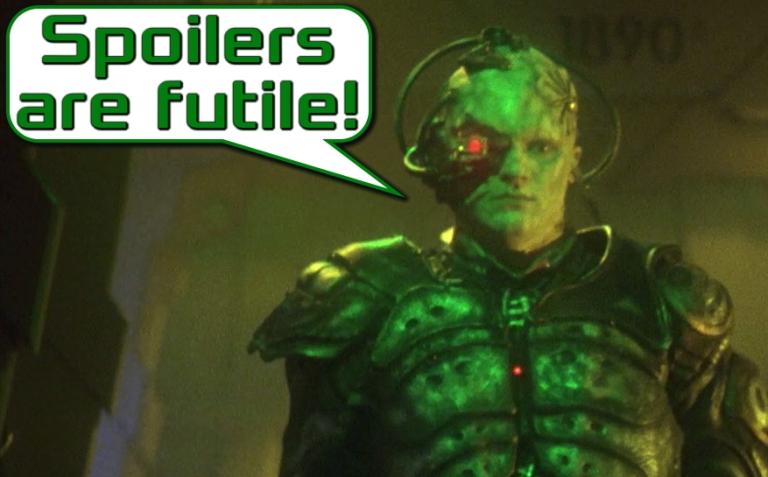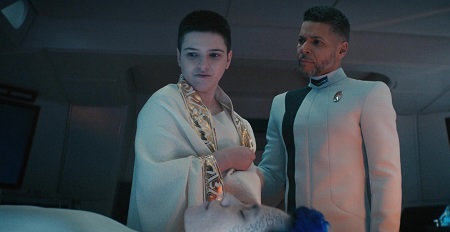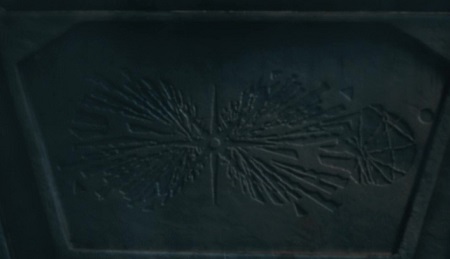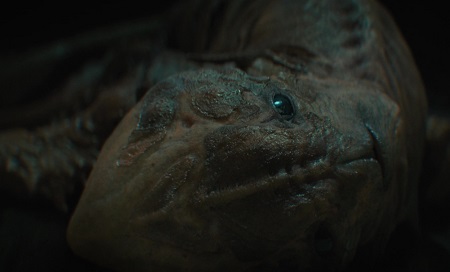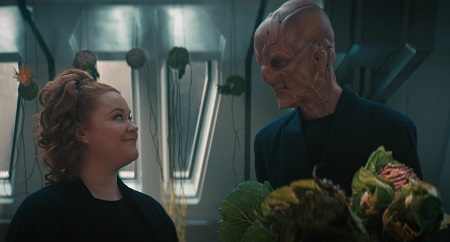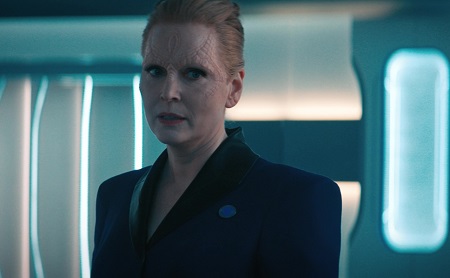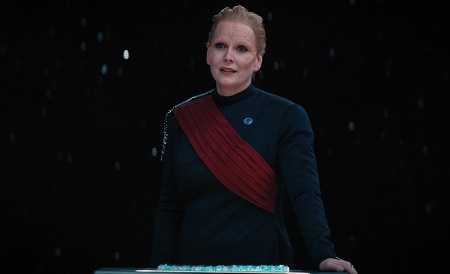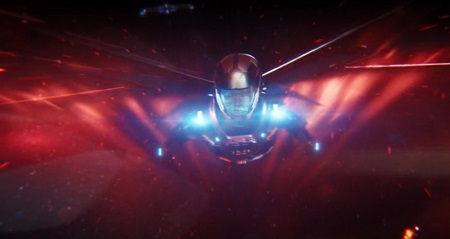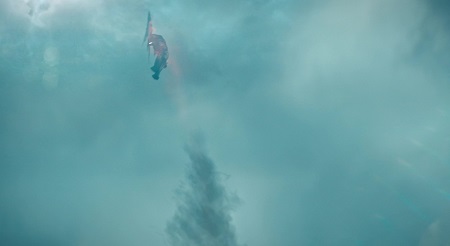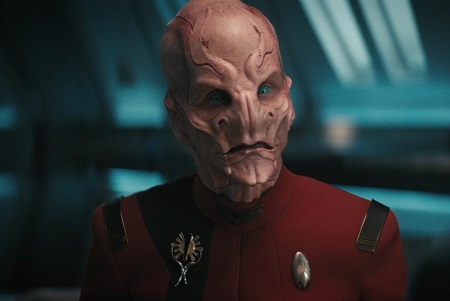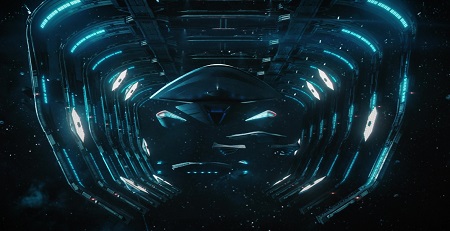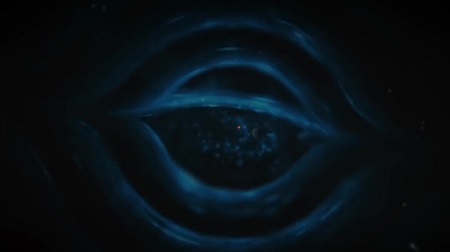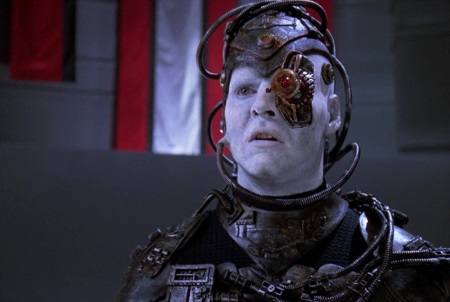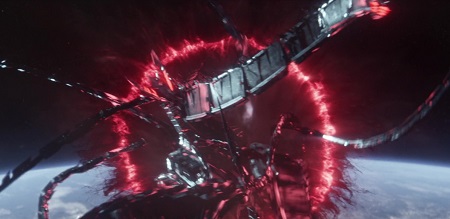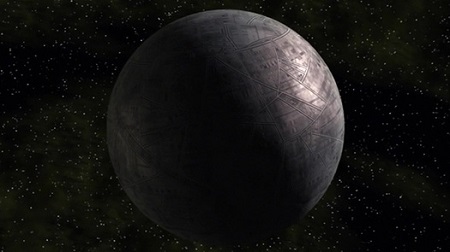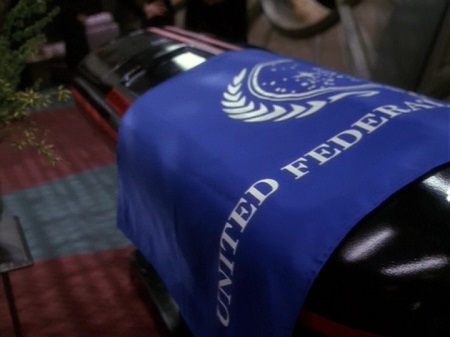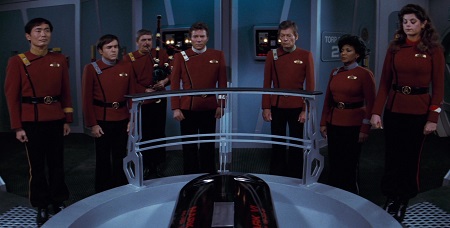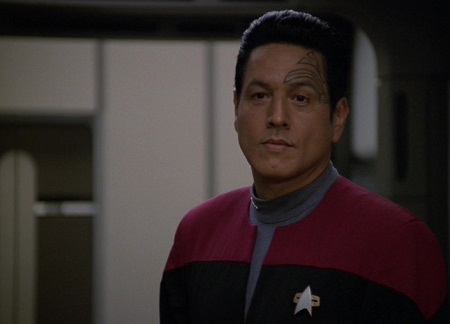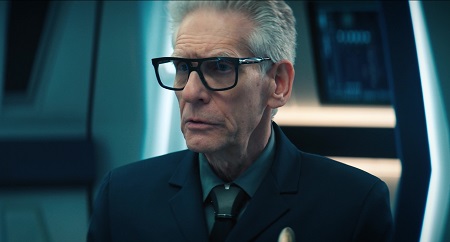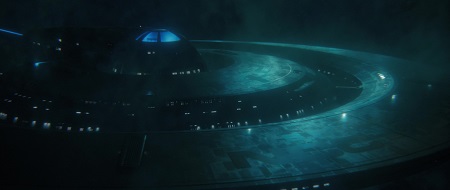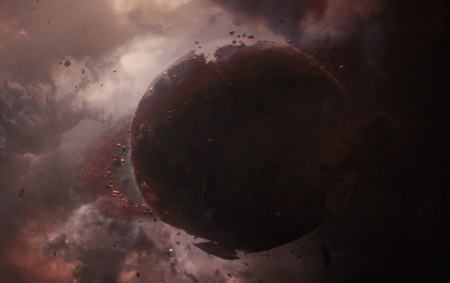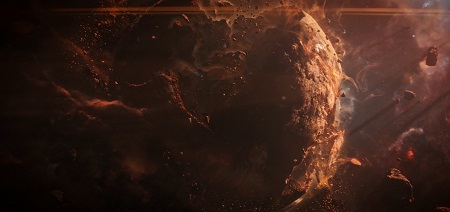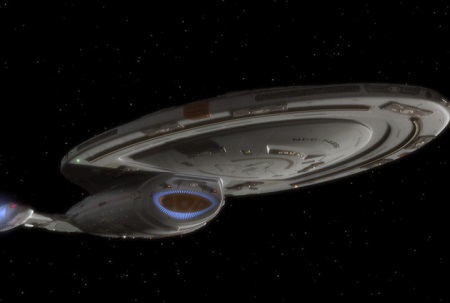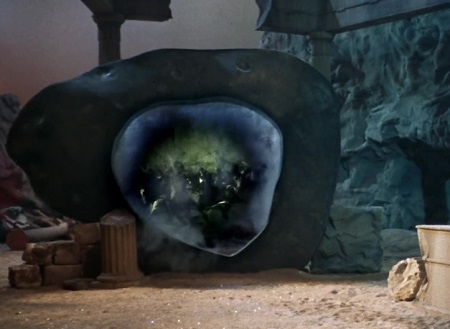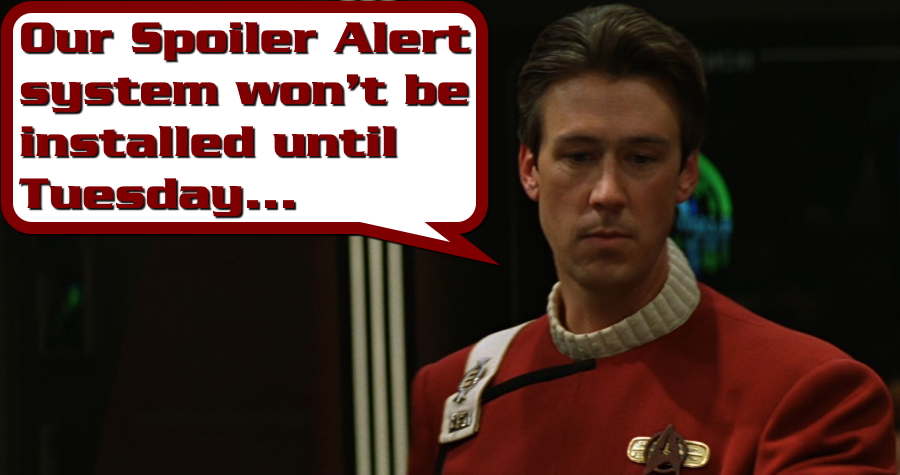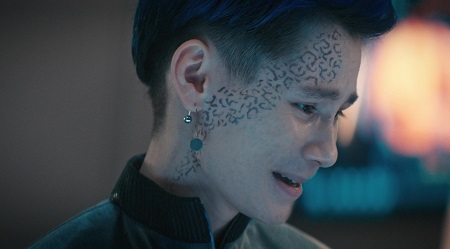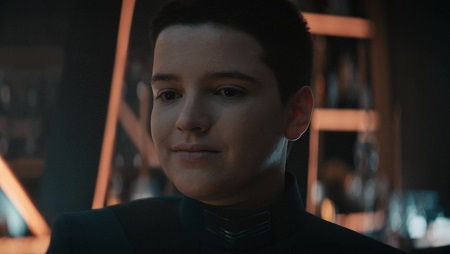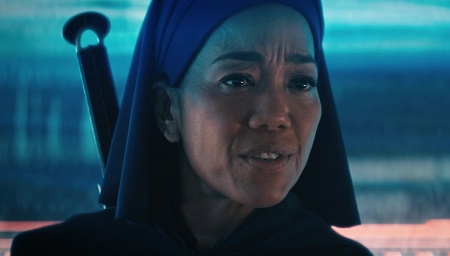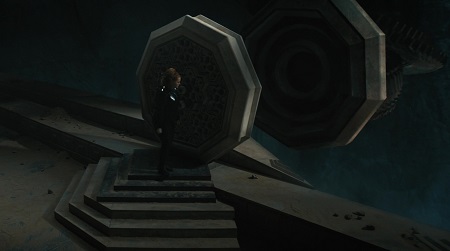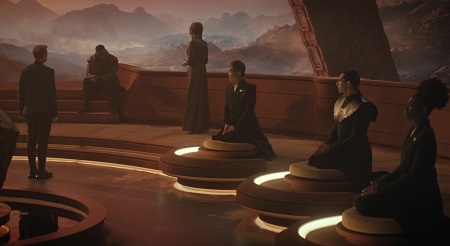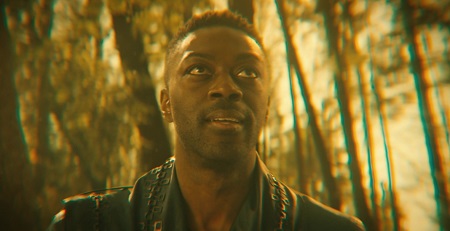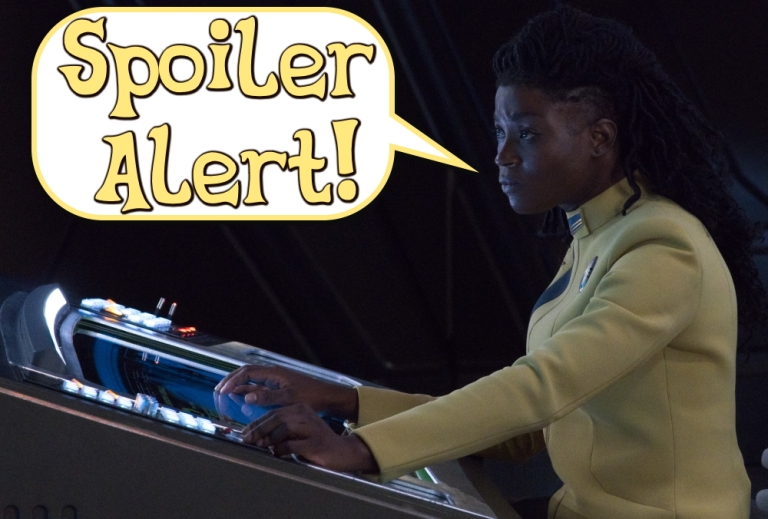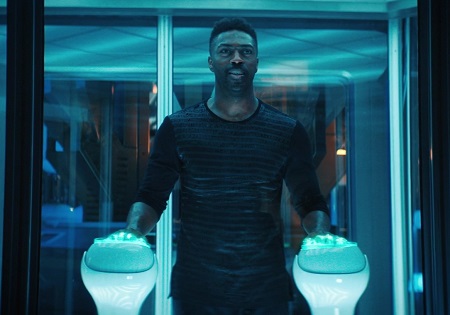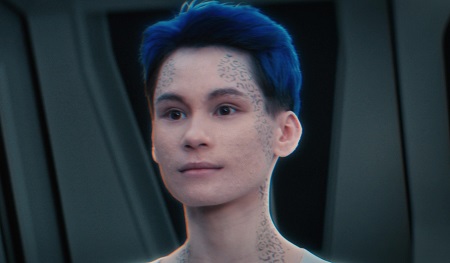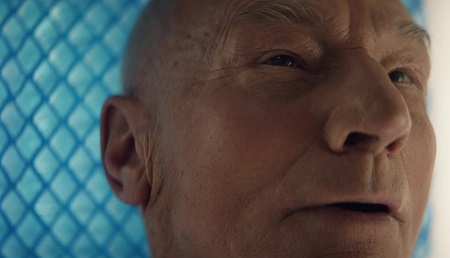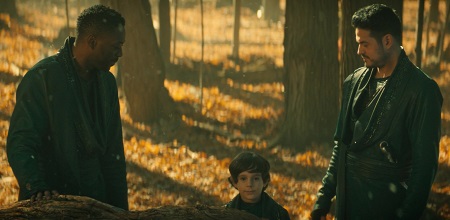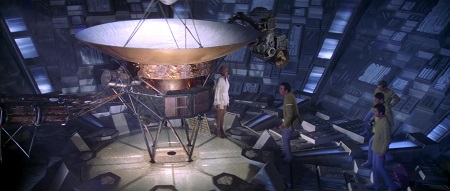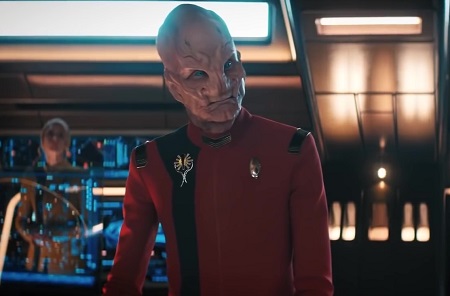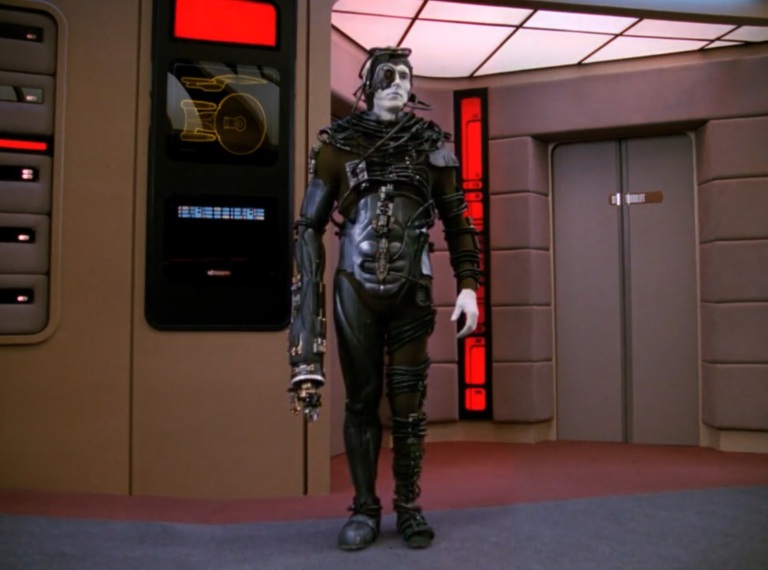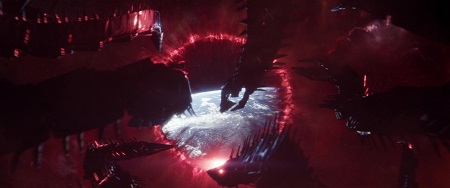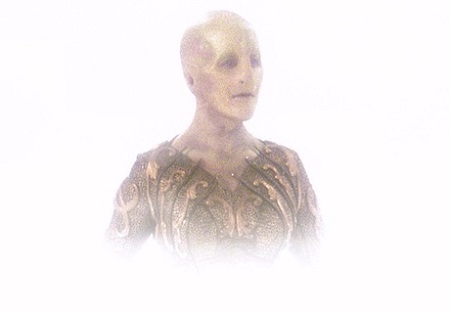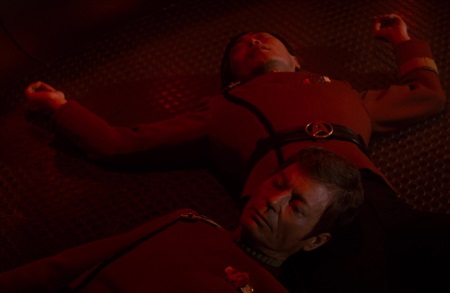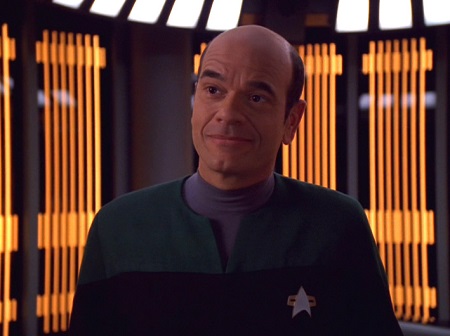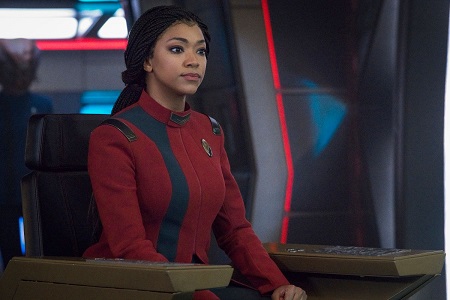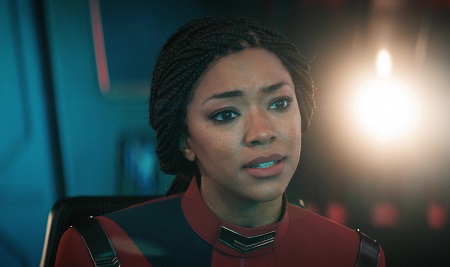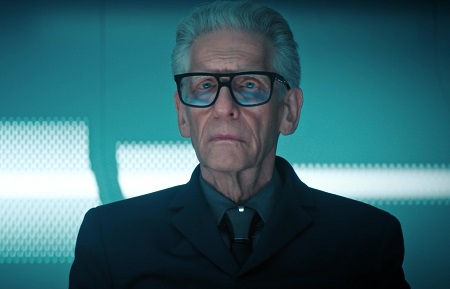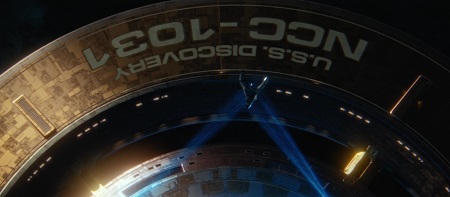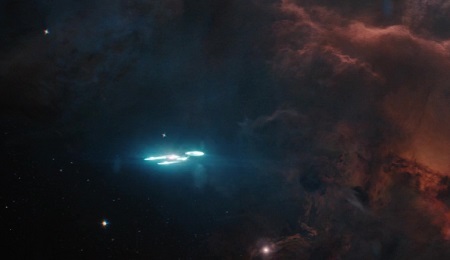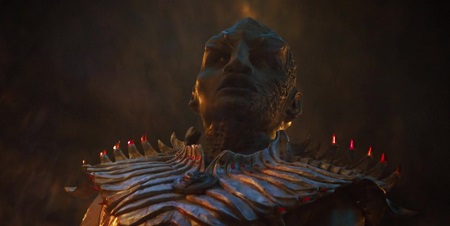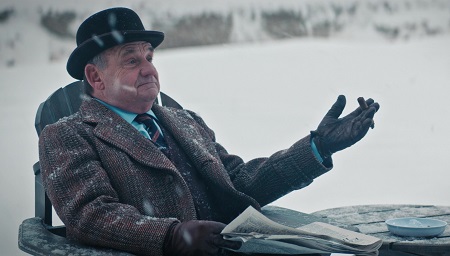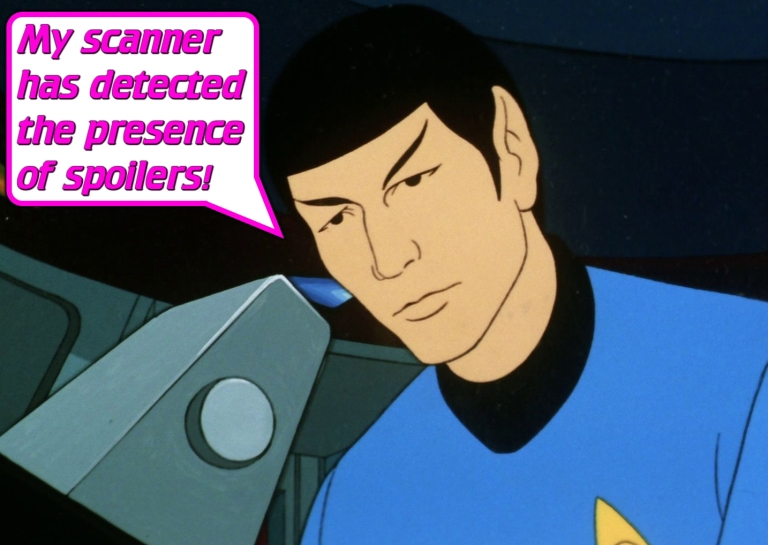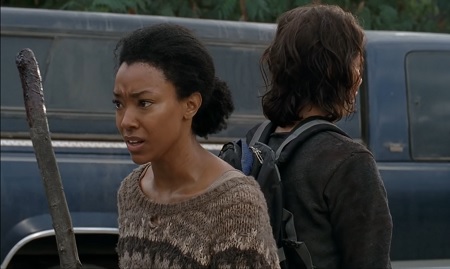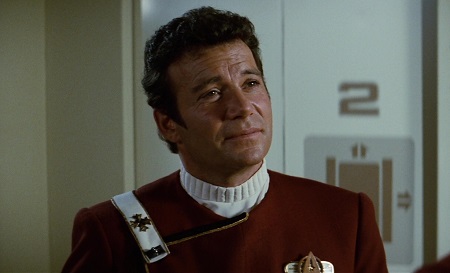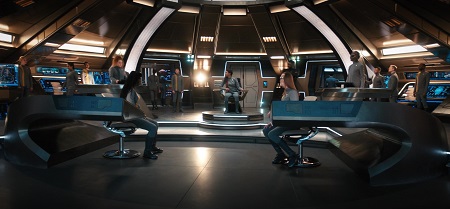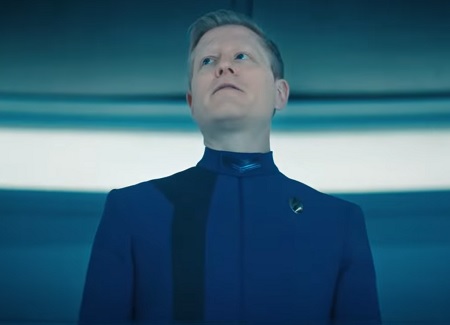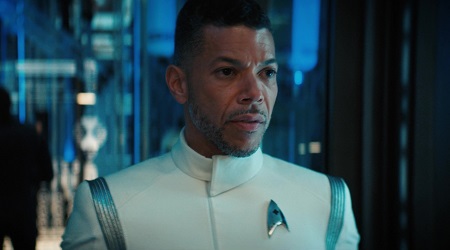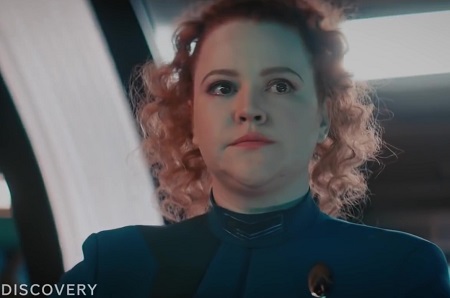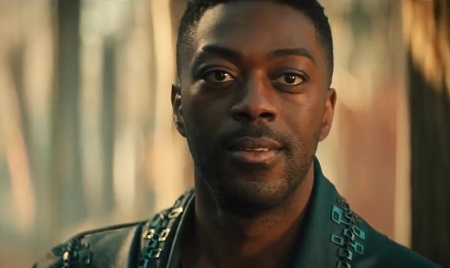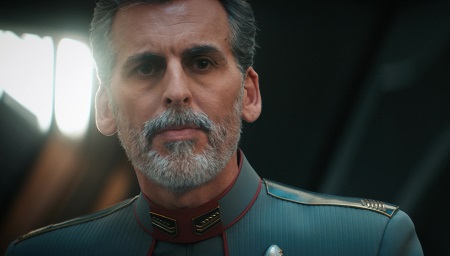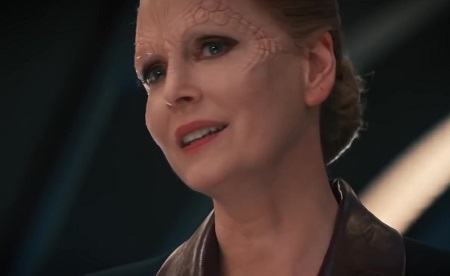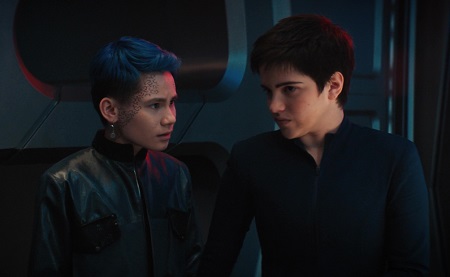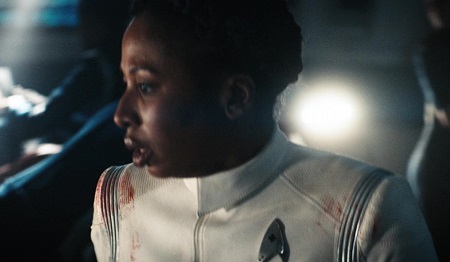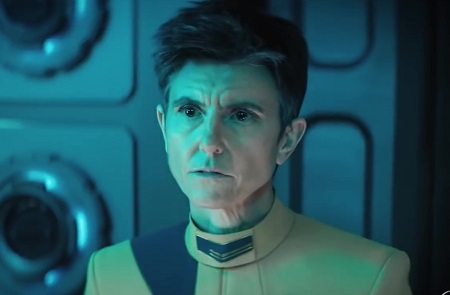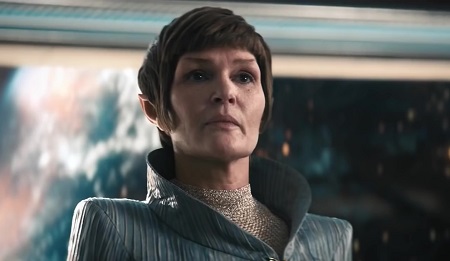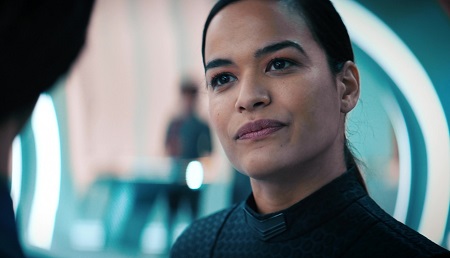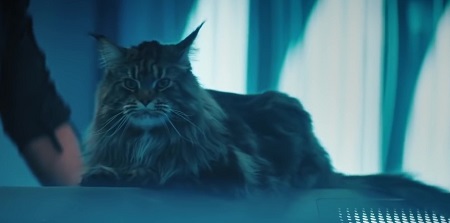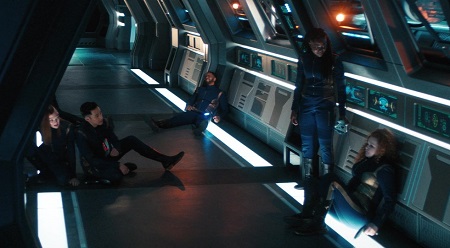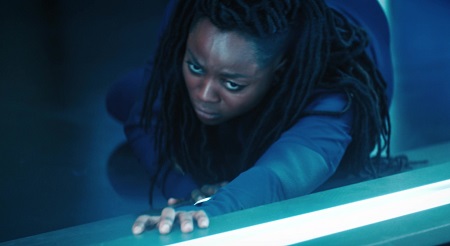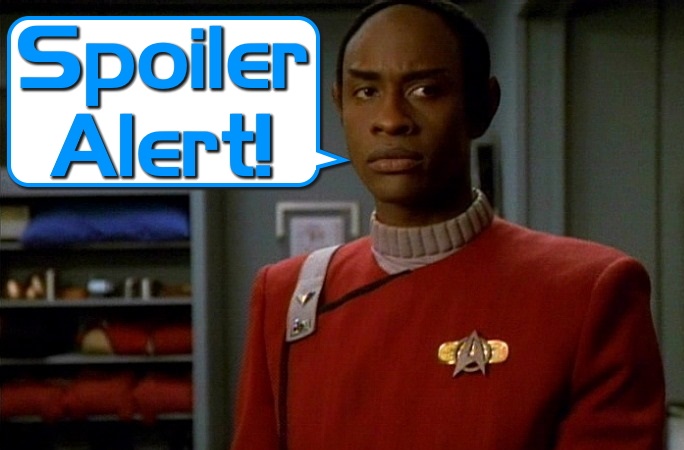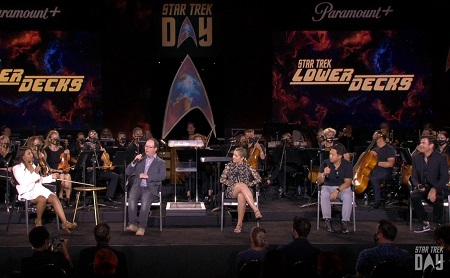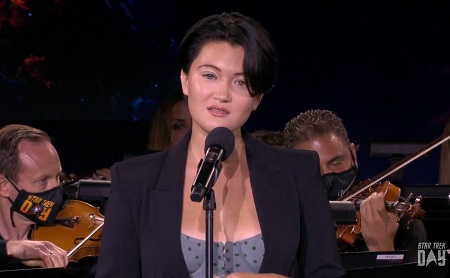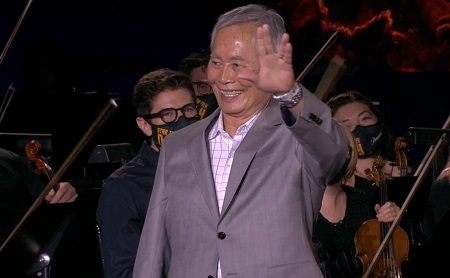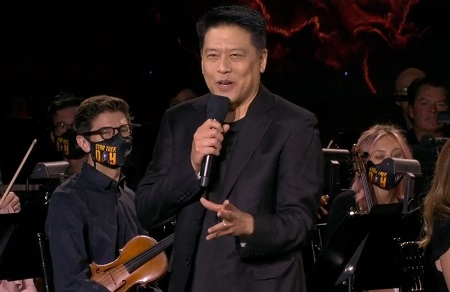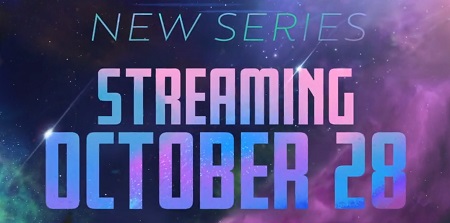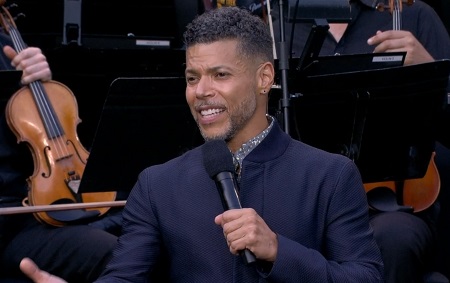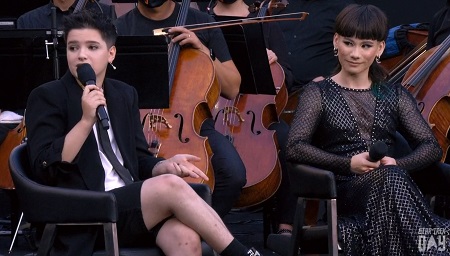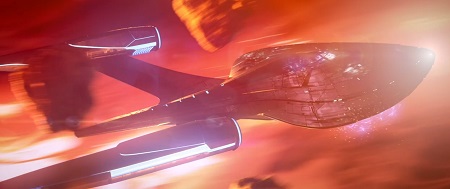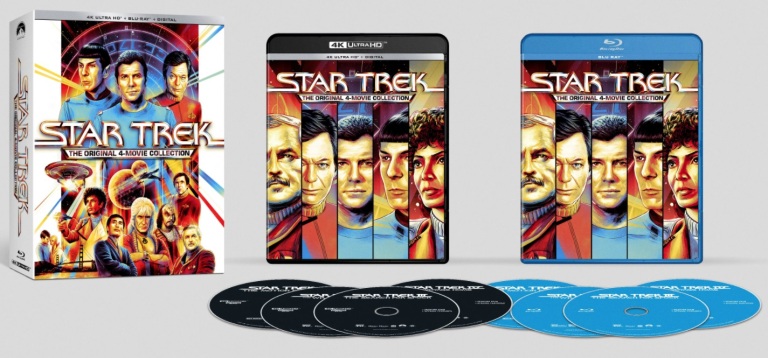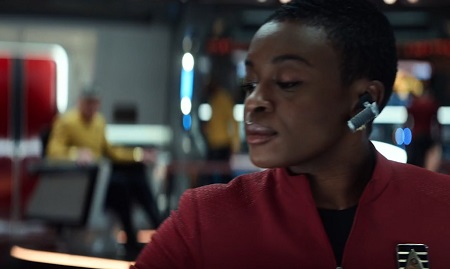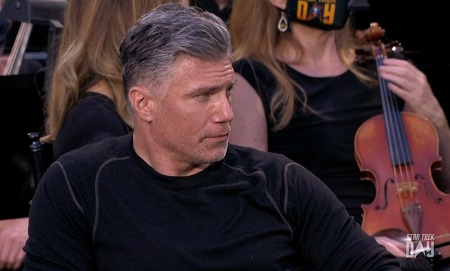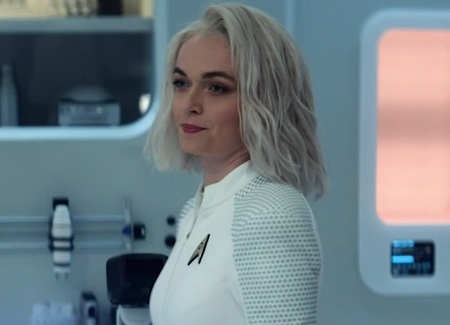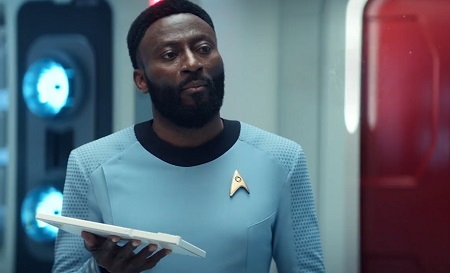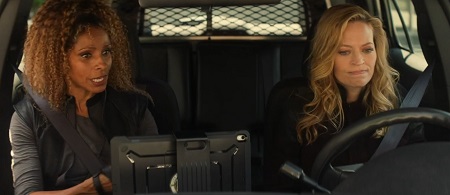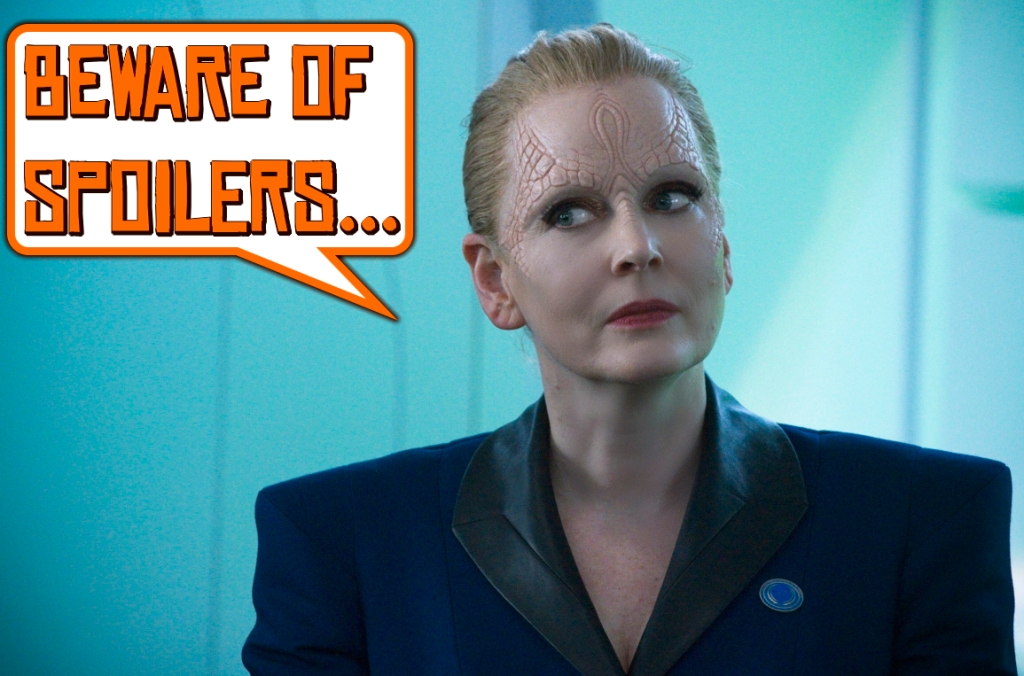
Spoiler Warning: There are spoilers ahead for Star Trek: Discovery Seasons 1-4.
Last week we learned that the DMA – the anomaly at the heart of Season 4’s story – is an artificial construct. Following up that big revelation was the challenge that befell Stormy Weather and director Jonathan Frakes, and I’m happy to report that Discovery rose to the occasion. Stormy Weather was a tense, dramatic, and incredibly exciting episode, one that has set a high bar for the rest of the season to reach.
Unfortunately, due to inexcusable corporate nonsense from ViacomCBS, Star Trek: Discovery is unavailable to many fans around the world. This short-sighted, self-defeating decision has been rightly condemned by Star Trek fans, but we need to keep the pressure on and continue to call out this misbehaviour at every opportunity. Star Trek is not the sole preserve of any one group of fans – it’s something all of us should be able to enjoy together. Denying that opportunity to even one Trekkie would be unacceptable; to deny it to millions in dozens of countries and territories around the world is just offensive.
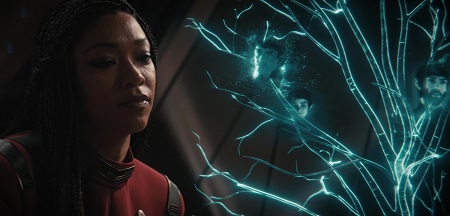
So let’s take a look at Stormy Weather – an episode named for a song from 1933. There have been some connections between Discovery and sister show Star Trek: Picard, but one of the most unexpected thematic connections came in the form of this song. Picard Season 1 prominently featured the song Blue Skies, written in 1926, and to hear another older, slow-tempo jazz song in Discovery was an unexpected but interesting way to bridge the gap between these two very different parts of the Star Trek franchise.
Stormy Weather featured Captain Burnham prominently, and we’ll look at her contributions in a moment. But where the episode did remarkably well, in my view, was through a series of smaller moments that showed off several members of Discovery’s secondary cast – many of whom have had less to do so far this season than in Season 3 last year.

Commander Owosekun had a big centre-stage moment, objecting on the bridge in front of her colleagues and leading to a sweet moment later on between her, Detmer, and Saru. Dr Pollard, making her first major appearance of the season, got two significant moments in the spotlight, including one incredibly dramatic moment as a crewman was blown out into space through a hull breach.
Ian Alexander, who plays Gray, and Annabelle Wallis, who voices Zora, were Stormy Weather’s breakout stars for me. Gray had already given us one of the season’s emotional highs when he completed his transfer into a new synthetic body, but there was definitely a question mark surrounding his next steps. Adira was a commissioned ensign, but Gray didn’t really have a role aboard the ship – something that Discovery acknowledged this week when Gray found himself alone in the lounge as the crew scrambled to their posts.
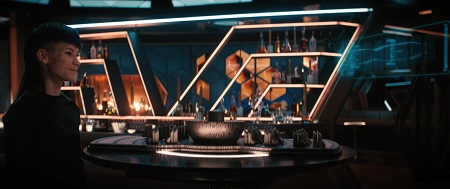
There’s always something very relatable about this kind of storyline. Anyone who’s ever dealt with feelings of helplessness or loneliness should be able to empathise with Gray in this moment, and it’s certainly something I’ve been through before on more occasions than I perhaps care to admit! As everyone on the ship attended to their duties, Gray was left alone – and this led to a really touching sequence between he and Zora that ended up playing a major role in the story.
Zora was a background presence for much of Season 3, and it was only really last week when the revelation that she can feel emotions came out that she emerged as a major player. Zora’s interactions with Gray this week have done more to humanise her and lay the groundwork for future character development than any episode has since Calypso – and if Discovery chooses to, the show could now make Zora a major presence on the ship going forward.
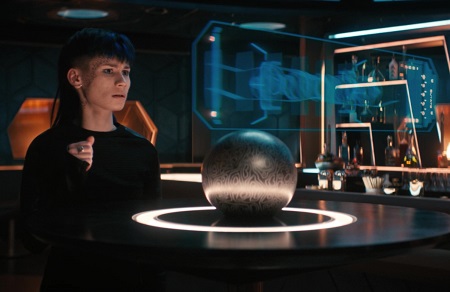
I can’t be the only one noticing an homage to 2001: A Space Odyssey, right? Zora’s line to Captain Burnham when she refused to follow an order felt like it had come straight from HAL 9000! Of course, Zora went in a different – and thankfully far friendlier – direction shortly thereafter, but the reference was appreciated nevertheless.
The development of Zora’s emotions brings the character one step closer to her portrayal in the Short Treks episode Calypso, but at this point I’m still not sure how – or even if – the stories will line up. As we’ve discussed previously, for every step made toward Calypso since Season 2 we’ve seen at least one step away – and with Discovery in the far future already, the further development of Zora still leaves the show with significant hurdles to overcome if a full connection to Calypso is on the cards. But I guess that’s a conversation for another time!
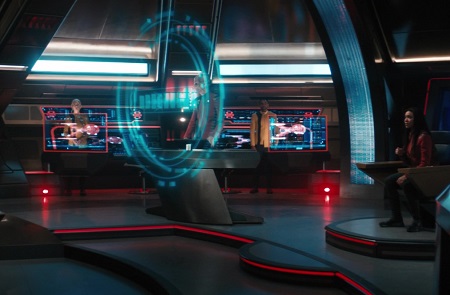
Gray and Zora were able to share a connection as two passengers on the ship who felt out of place and unsettled. There was a subtle continuation of the transgender theme present in Gray’s earlier incorporation story, as Gray made reference to choosing his own name; something Zora could relate to. Despite Gray’s incorporation feeling somewhat rushed at the beginning of the season, it’s been great to see him as a character in his own right, able to interact with others aboard the ship. Pairing him up with Zora was unexpected but an absolute delight.
Discovery has continued Star Trek’s use of storytelling by metaphor and analogy, and we see that again with Gray. His struggle to become visible, his comments about getting used to his new body, and again this week through his conversations with Zora all had serious things to say about the difficulty of transitioning, coming out as transgender, finding acceptance, and other trans issues. But they were told through a science fiction lens in the very best tradition of Star Trek. It’s hard to think of a more understandable and relatable depiction of a trans individual in all of entertainment, and the writers deserve a lot of credit – as does Ian Alexander, who stepped up this week and put in his best performance of the season so far.

Discovery as a whole is a series with a cinematic feel to it. That isn’t something unique among television shows any more, as we can see many other high-budget productions pushing hard for similar visuals and effects. But Stormy Weather definitely veered hard into the cinematic, with all manner of special effects thrown into the episode’s forty-five minutes. We had silent slow-motion sequences, stunning CGI visual effects – including a striking shot of the USS Discovery itself inside the void, tightly-focused shots of characters in motion, close-ups of faces, and a whole lot of fire and flame to name but a few. Such a varied mix of visuals, coupled with Jonathan Frakes’ clever cinematography, gave Stormy Weather a sense of weight, of gravitas, far beyond what the franchise usually manages outside of its feature films.
Let’s talk about the storyline itself. This week, everything was tied together. There were secondary plotlines with Gray and Zora and with Book, Stamets, and the doctors, but they all came together and connected with the main story in significant ways as Captain Burnham led the USS Discovery inside a subspace rupture that the DMA had left behind.
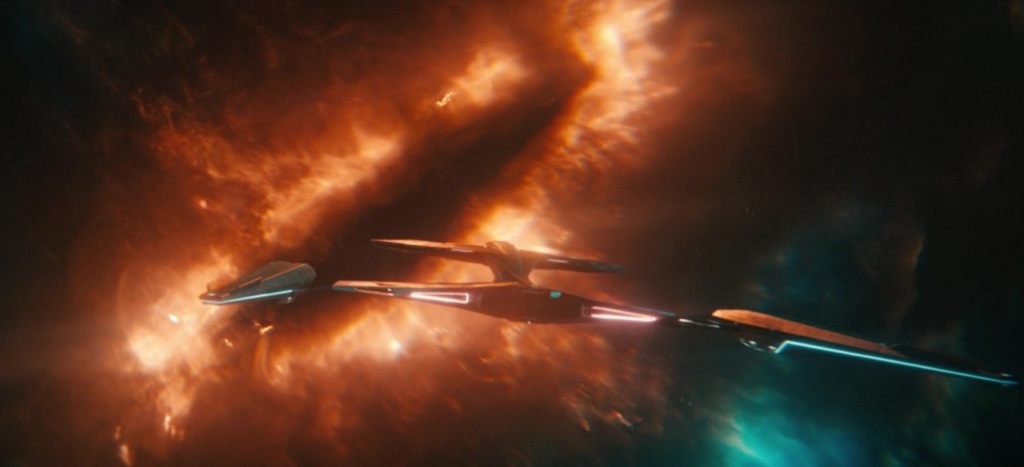
We learned something major about the DMA: that it’s of extragalactic origin, or has, at the very least, passed through the galactic barrier. This would seem to narrow down Unknown Species 10-C to a handful of suspects, assuming that the galactic barrier depicted in past iterations of Star Trek remains generally impermeable to residents of the Milky Way. There were comments from Book and Stamets that this evidence all points to Unknown Species 10-C being someone that “the Federation has never encountered,” but I don’t think we can be certain of that just yet. The Burn seemed to be connected to Ni’Var’s SB-19 project in Season 3… until it wasn’t! We’re barely halfway through the season, so there’s plenty of time for hypotheses to be debunked! In this week’s theory post I’ll go into more detail about what this revelation could mean for Unknown Species 10-C, so stay tuned for that!
Venturing inside a rift in subspace was a dangerous assignment, but one that was certainly necessary for understanding more about the DMA. There really isn’t much to nitpick on this side of the story, and Captain Burnham handled it about as well as any other captain could have. Captains Kirk, Picard, Sisko, Janeway, or Archer would all have made similar choices under the circumstances, and we can point to many moments in past Star Trek shows where similarly dangerous scientific missions have gone awry despite the best efforts of the various captains.
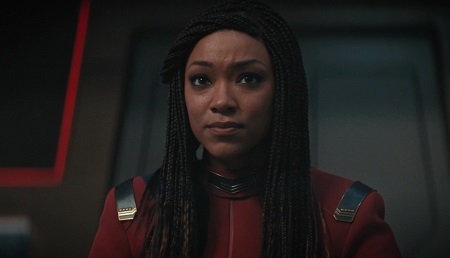
Discovery has some very expansive sets when compared to past iterations of Star Trek, with the bridge in particular being larger and wider than basically any other to date. But despite that, this week I felt a real sense of claustrophobia in the style of old war films set aboard submarines. Stormy Weather was basically a bottle show – an episode set almost exclusively aboard the ship making use of existing characters. Rather than that being a limitation, as it sometimes has been in past iterations of Star Trek, the episode leaned into this in the best way possible, drawing on the inherent strengths of that style of story to create a genuinely dark and unsettling atmosphere aboard the ship.
This began with Gray and Zora alone in the lounge and culminated in Captain Burnham staying behind on the bridge, with only Zora for company, as the desperate last-ditch attempt to escape the void came to a head. Discovery has made interesting use of fire this season, and I’ve seen some criticism of the way the pyrotechnics come across on screen. But here, the combination of CGI plasma and jets of real fire worked exceptionally well, building up a sense of genuine danger that Captain Burnham, and indeed the whole crew, were in.
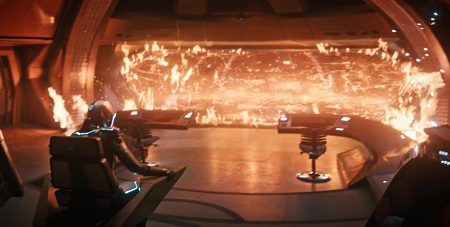
At this point, after more than three seasons of Discovery, we know that the show has a tendency to blitz through some of the technobabble and sciencey stuff to get to the drama and action, and so it proved again in Stormy Weather. As happened last week, when the DMA’s artificial origin was confirmed in a short scene with a few lines of dialogue, its extragalactic origin was likewise only included in a pretty short sequence. I liked the concept behind it – that the energy surge that hit Book left behind trace particles that could be used to uncover another piece of the puzzle. That setup was interesting. But the conclusion was once again very quick, almost rushed, and I feel more could’ve been made of both of these points.
Another point of criticism I had concerns Dr Pollard’s sequence in the hallway. I said before the season began that killing off a known character can be a great way for a show like Discovery to communicate the stakes involved. And as Dr Pollard raced to the hull breach, there was for a brief moment a feeling that she might’ve been running to her demise. In the end, though, it was a redshirt who ended up being killed – and the death was far less impactful as a result.
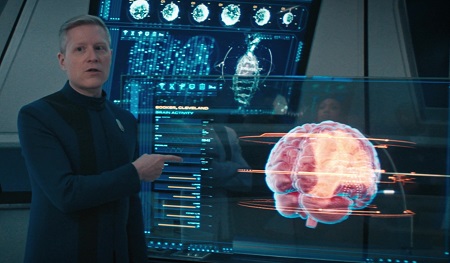
Now I’m not on some anti-Pollard crusade wishing death upon the character! But hers is the latest example of how Discovery wants to have its cake and eat it too: the writers want all of the emotional impact of a character death but without being willing to commit to making it someone significant. We saw this in Season 2 with Airiam, and again in Season 3 when practically everyone survived despite the dangerous situations the crew found themselves in. The danger in flirting with character deaths but failing to follow through is that the show is slowly building up a sense of plot armour; there’s a developing feeling that basically no one who gets so much as a speaking line in an episode will be in any real danger. And that will have an effect as the season progresses – potentially making similar moments feel less impactful or tense in future episodes.
To be fair, past iterations of Star Trek had this problem too – but television storytelling has evolved since then. In a world where shows like Lost, Game of Thrones, and The Walking Dead pioneered a concept that I call the “disposable cast,” where even major characters can be killed off at the drop of a hat, Star Trek has to take note. Audience expectations are shifting in some respects, and if Discovery wants all of the trappings of modern television storytelling, it has to be willing to boldly swing the proverbial axe on occasion.
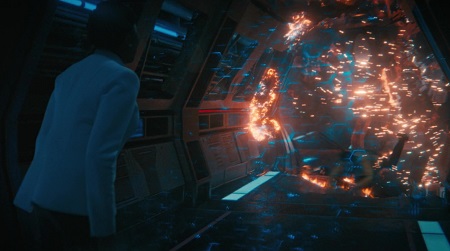
Last week, the addition of wonderful guest star Shawn Doyle as mad scientist Ruon Tarka meant that I didn’t really feel Tilly’s absence. Stormy Weather was different, though, and I think we’re seeing the first real effects of her departure. Tilly suffered with anxiety, and doubtless would have found the void a difficult situation to deal with. But even at her most nervous, she had a way of lightening the mood and ever so slightly lowering the tension. Perhaps a story like Stormy Weather needed her absence to function as intended – and I concede that argument. But at the same time, I look back on the episode and wonder what Tilly might’ve said, how she might’ve found a way to break through some of the more tense moments with Captain Burnham, Stamets, Book, Zora, and everyone else. Adira fills Tilly’s shoes in several key ways – but no one can truly replace the lighthearted energy that she brought to Discovery.
In a fast-paced sequence at the beginning of Kobayashi Maru, we got to see the crew working under Captain Burnham’s command as one well-oiled machine. After that, though, Discovery took the captain on several smaller adventures off to the side, and it wasn’t until Stormy Weather that we saw her in such a tense situation, having to really feel the burden and weight of command. Like Star Trek captains past, she stepped up. I was reminded of the scene in the episode Booby Trap where Captain Picard takes the helm and pilots the Enterprise-D as Captain Burnham arrived on the bridge, alone, to sit in the captain’s chair and guide her ship and crew to safety.
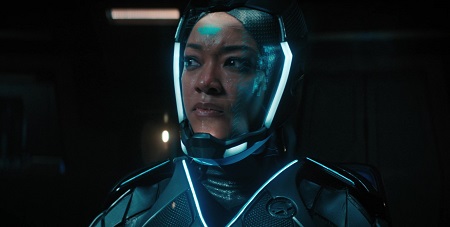
Speaking of The Next Generation, it was neat to see an oblique reference to the episode Relics. In that episode, Scotty was found alive in a transporter pattern buffer, and it was this method that the crew of Discovery were able to use to survive the dangerous journey out of the void. Discovery hasn’t been shy when it comes to harkening back to past iterations of the franchise this season, which has been fun to see. Shooting so far forward in time has expanded the number of callbacks and references that the show is able to do, and the writers – who are clearly big Trekkies themselves – have taken full advantage.
Along with Ian Alexander, we also have to praise Sonequa Martin-Green for her performance this week. Captain Burnham had a complex role this time, one that required her to put any thoughts of failure to one side and to focus on getting her ship and crew to safety. But she also had to find time for empathy, to share her feelings with Zora to help the AI deal with her own newfound emotions. On both sides Sonequa Martin-Green really nailed it, and Stormy Weather is one of the absolute best Captain Burnham episodes as a result.
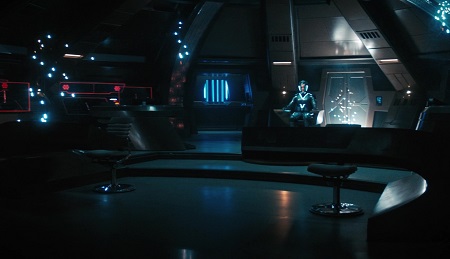
The themes of trauma, empathy, and unexpected connections were all present in Stormy Weather as they have been all season. This time it was Zora who needed the most help, in a manner somewhat reminiscent of Data in Generations. Developing emotions for the first time led to Zora’s first experience with fear, just as installing his emotion chip did for Data, and both found themselves overwhelmed and struggling to cope. Just as Data’s friends rallied around him, so too Zora found help from both an old friend in Captain Burnham and a new friend in Gray.
It fell to Captain Burnham and, to a lesser but still significant degree, Saru, to remain level-headed as the situation deteriorated. Captain Burnham had to find a way to connect with Zora in order to convince the AI to go through with the plan to escape. Likewise, Saru had to calm Commander Owosekun when tensions on the bridge threatened to boil over. We’re seeing again the very different ways that people respond to trauma: in this case, Zora almost completely shut down, feeling overwhelmed and unable to do anything, whereas Owosekun wanted so badly to do something that she became angry. These themes are almost certainly going to run through the rest of the season, and will go a long way to keeping Discovery grounded in its characters rather than being lost in sci-fi wonders.

One scene in particular hit close to home for me. After Book had been hit by the energy surge and was recovering in sickbay, he had a moment with Doctors Pollard and Culber where he tried to ask if he was losing his mind, going crazy, and if the hallucinations he was experiencing would last. Having been in a similar position in hospital, struggling and not knowing where my mental health issues began and ended, I found David Ajala’s performance very emotional in that moment.
Book’s hallucination of his father stemmed from the fact that it was his father’s birthday – and we know that mental health issues can absolutely manifest from things someone is already thinking about or dealing with. His line to his father that he hoped he was real, because it would mean his spirit still exists and thus Leto, Kyheem, and others might still exist somehow too, was another deeply emotional line. Though the episode didn’t focus on Book, this presentation took him to completely different emotional places, and I found it resonated with me in a very personal way.
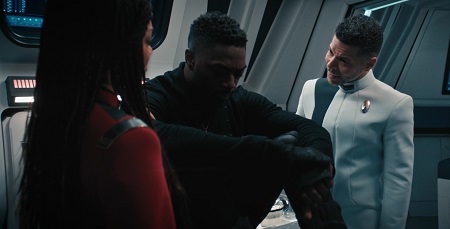
So I think that’s it for this week. Stormy Weather really has set a high bar for the rest of the season to reach! It would have been easy for an episode like this one to come across as feeling like mind-numbing action, but Discovery’s tight focus on characters and emotions elevated it to being so much more than that. Little moments with the show’s secondary cast were greatly appreciated, and almost everyone got a line or two of dialogue this week. It felt like the plans to escape the void were a real team effort – and not just another “Burnham saves the day” story that we might’ve seen in Seasons 1 or 2.
There was some disappointing news yesterday, though. At the last minute, it’s been announced that Discovery is taking a mid-season break after next week’s episode, going off the air for around six weeks before resuming in February. ViacomCBS and Paramount+ need to do better at communicating with fans, because this is the latest in a long line of unnecessary blunders. Fixing Star Trek’s scheduling conflicts has to be a priority, too – Prodigy only aired four episodes before taking a break, now Discovery gets half a season before it too has to take a break. It’s possible that there are behind-the-scenes delays, perhaps with post-production work on Picard or Strange New Worlds – but it’s not a good look for a company trying to market a big franchise and an expanding streaming platform. Fixing these problems needs to be a priority for Star Trek’s corporate overlords.
Next week looks to bring back Ruon Tarka, which should be a lot of fun! Stay tuned in the days ahead for my updated theory list – including several ideas about the DMA and its possible creators. And if you celebrate, I wish you a very Merry Christmas Eve! I hope your holidays are successful and fun!
Star Trek: Discovery Season 4 is available to stream now on Paramount+ in the United States, Scandinavia, Latin America, and Australia. The show is on Pluto TV in the UK, France, Germany, Italy, and other parts of Western Europe at 9pm on Fridays and Saturdays. Individual episodes or the full season can be purchased on iTunes, Amazon Video, and possibly other platforms in the UK, parts of Europe, and select other countries. The Star Trek franchise – including Discovery and all other properties mentioned above – is the copyright of ViacomCBS. This article contains the thoughts and opinions of one person only and is not intended to cause any offence.



